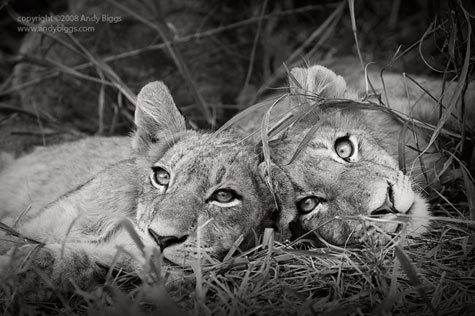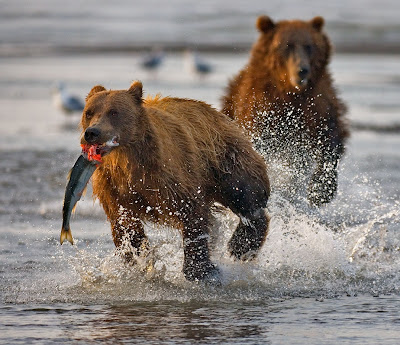Nature photography is a fascinating pursuit, and wildlife photography can be the most challenging and rewarding field of all. Digital cameras have inspired a whole new generation of photographers to get into wildlife photography.
Most of the photography guides these days focus on the technical aspects of the camera: but really good photography relies more on composition, lighting, and sensitivity to your subject. This means you can improve your photography by thinking creatively, not technically.
Here are five of my top tips for taking better wildlife photographs.
Get to the subject's eye level. Wildlife photos are most effective if they create an intimate connection between the subject and the viewer. The best way to do this is to take your photo at the subject's eye level. This way, the viewer can feel like they are looking at the subject from inside its little world, rather from the outside looking in.
If, for example, your subject is low to the ground (like a lizard, frog, or even a pet), crouch or lie flat, getting as low as possible so you can take your photo at the subject's eye level.
It's All In The Eyes. The personal connection mentioned in tip #1 is really about eye contact, so it is important to get the eyes right. If the eyes in your wildlife photo are sharp and clear, the photo will probably work. If they are out of focus, lost in shadow, or if the subject blinks or turns its eyes away, the connection will be lost, and the photo will almost certainly fail.
You don't even need your whole subject to be in focus. Your animal could be mostly hidden by leaves, in shadow and out of focus. The picture could still work...as long as the eyes are open and captured sharply in the picture.
If The Background Doesn't Help, Get Rid Of It. Many wildlife photos are spoiled because the background is cluttered, distracting, ugly, or just plain inappropriate. For example, seagulls on a beach can be quite beautiful, but seagulls at the local rubbish tip is a different matter. Also, wildlife photos look far less natural if you can tell they were taken in a zoo. Apply this principle: "Anything that does not make my photo better, makes it worse."


.jpg)









Post Title
→Wildlife Photography
Post URL
→https://sleighphotography.blogspot.com/2014/08/wildlife-photography.html
Visit Photography for more Photography Informations
0 comments:
Post a Comment